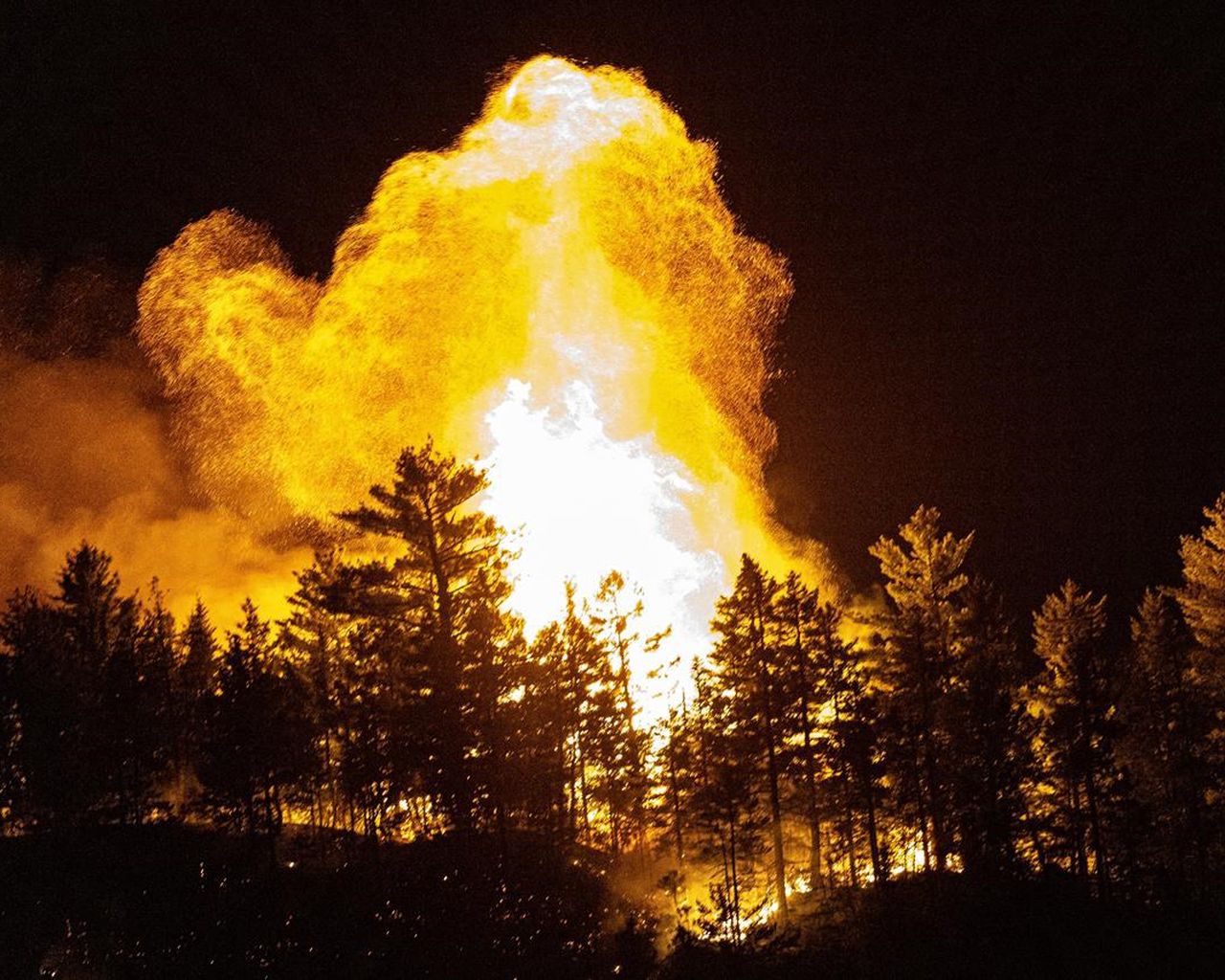Climate
The Increasing Threat of Wildfires in North America: Impacts, Consequences, and Mitigation Strategies to Combat Climate Change  By Editor
By Editor
 July 2nd, 2023 Wildfires have become an increasingly prevalent and destructive consequence of climate change, particularly in North America. This essay aims to explore the profound changes that these wildfires have brought to our world and highlight the urgent need for mitigating their effects. By examining the causes, impacts, and consequences of wildfires, we can develop a comprehensive understanding of the issue at hand. Furthermore, this essay will delve into effective strategies to mitigate climate change and address the rising threat of wildfires. These strategies include reducing greenhouse gas emissions, promoting sustainable land management practices, enhancing early warning systems, improving firefighting techniques, and fostering public awareness and education.
July 2nd, 2023 Wildfires have become an increasingly prevalent and destructive consequence of climate change, particularly in North America. This essay aims to explore the profound changes that these wildfires have brought to our world and highlight the urgent need for mitigating their effects. By examining the causes, impacts, and consequences of wildfires, we can develop a comprehensive understanding of the issue at hand. Furthermore, this essay will delve into effective strategies to mitigate climate change and address the rising threat of wildfires. These strategies include reducing greenhouse gas emissions, promoting sustainable land management practices, enhancing early warning systems, improving firefighting techniques, and fostering public awareness and education. 
The accelerating impact of climate change has become increasingly evident, with one of the most alarming consequences being the surge in wildfires across North America. Rising temperatures, prolonged droughts, and changes in precipitation patterns have created the ideal conditions for wildfire ignition and rapid spread. This essay will discuss the significant changes that wildfires have brought to our world, both ecologically and socioeconomically, and the urgent measures required to mitigate the effects of climate change.
Causes and Drivers of Wildfires:
Climate Change:
Rising temperatures and heatwaves, changes in precipitation patterns, extended periods of drought, and increased frequency and intensity of lightning strikes are all contributing factors to the increase in wildfires. These climate-related changes create drier vegetation, increasing the availability of fuel for fires and promoting their rapid spread.
Human Activities:
Human actions also play a significant role in the occurrence and severity of wildfires. Forest mismanagement and inadequate land-use policies have led to the accumulation of dense, highly flammable vegetation. The expansion of urban areas into wildfire-prone regions increases the risk of ignitions. Ignition sources such as campfires, cigarettes, and power lines further exacerbate the problem.
Impacts and Consequences of Wildfires:
Ecological Impacts:
Wildfires have severe ecological consequences, including the loss of biodiversity and destruction of habitats. The destruction of vegetation and soil erosion lead to long-term degradation of ecosystems. Additionally, altered ecosystem dynamics and disturbance regimes disrupt the natural balance of ecosystems, impacting plant and animal communities.
Socioeconomic Impacts:
The impacts of wildfires extend beyond the natural environment. They pose threats to human health and safety, resulting in injuries, respiratory issues, and even fatalities. Wildfires also cause extensive damage to infrastructure and property, leading to significant economic costs. Displacement of communities and the loss of livelihoods further compound the socioeconomic impacts of wildfires.
Mitigation Strategies to Combat Climate Change and Wildfires:
Reducing Greenhouse Gas Emissions:
To mitigate climate change and reduce the occurrence of wildfires, it is essential to decrease greenhouse gas emissions. This can be achieved through transitioning to renewable energy sources, implementing energy efficiency measures, and promoting sustainable transportation options to reduce our carbon footprint.
Sustainable Land Management Practices:
Implementing sustainable land management practices is crucial for reducing the risk of wildfires. Controlled burns and prescribed fire programs help maintain healthy ecosystems and reduce fuel loads. Restoring and managing forests, implementing fire prevention measures, and promoting sustainable agricultural practices are also important strategies.
Early Warning Systems and Firefighting Techniques:
Enhancing early warning systems and fire detection methods can improve response times and allow for timely evacuation and firefighting efforts. Developing advanced remote sensing technologies can aid in early detection. Additionally, investing in technology, training, and collaboration between firefighting agencies can enhance firefighting capabilities.
Public Awareness and Education:
Public awareness and education play a vital role in wildfire prevention and preparedness. Educating communities about wildfire risks, safety measures, and responsible behavior in fire-prone areas is crucial. Encouraging community involvement in prevention efforts and preparedness planning can help minimize the impacts of wildfires.
Policy and Governance:
Strengthening Policy Frameworks:
Comprehensive climate change policies that address the root causes of wildfires are necessary. These policies should integrate strategies for mitigating climate change, including reducing greenhouse gas emissions and promoting sustainable land management practices. Additionally, adaptive management strategies and integrating wildfire considerations into land-use planning are essential.
International Cooperation and Partnerships:
International cooperation is crucial in addressing the global challenges of climate change and wildfires. Collaborating on research and knowledge sharing can foster innovation and effective strategies. Joint efforts to reduce emissions, combat climate change, and share resources and expertise in firefighting and disaster management are key to mitigating the impacts of wildfires.
Conclusion:
The escalating threat of wildfires in North America, fueled by climate change, demands urgent action and comprehensive mitigation strategies. The impacts of wildfires are far-reaching, affecting both ecosystems and human communities, leading to significant ecological, socioeconomic, and health consequences. To combat climate change and mitigate the effects of wildfires, a multi-faceted approach is necessary. This includes reducing greenhouse gas emissions, implementing sustainable land management practices, enhancing early warning systems and firefighting techniques, fostering public awareness and education, and strengthening policy frameworks. Only through collective efforts and global cooperation can we hope to address the escalating crisis of wildfires and safeguard our planet for future generations.
Facebook
WhatsApp

 By Editor
By Editor  July 2nd, 2023
July 2nd, 2023 